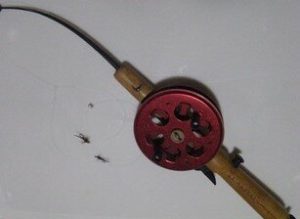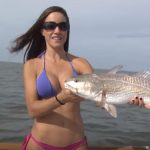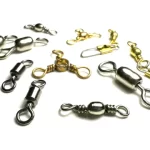As winter takes hold in the Catskills, many anglers shift from casting lines to seasonal activities like tying flies, preparing tackle, or even writing. However, for those looking to extend fishing into colder months, ice fishing offers a unique opportunity to connect with the outdoors and target various species beneath the frozen surface.

Although fly rods dominate many fishing adventures today, earlier years often included ice fishing as a winter pastime. With ice covering the waters, anglers relied on tip-ups and jigging rods to lure fish. A jigging rod, equipped with light line and a lure, allows for a rhythmic motion beneath the ice to entice bites.
Lures like Swedish Pimples and jigging Rapalas work well for larger fish such as trout, pike, or walleye. For panfish, smaller nymphs like prince or hare’s ear nymphs, often paired with bait like mealworms or maggots, are effective. Using a two-fly rig with split shot to achieve the desired depth can significantly increase success when targeting perch, crappies, or sunfish.
Ice fishing requires minimal equipment compared to trout fishing. Essential items include a jigging rod, nymphs, split shot, bait, and an ice auger or chisel for drilling holes. A foldable seat adds comfort, and for those more invested, a sled or portable shelter can enhance the experience.
Weather often influences the activity level of fish under the ice. School fish, like perch and crappies, travel in groups, providing bursts of action when they pass through. Drilling new holes may be necessary to follow these schools when the strikes stop. Low-pressure systems, however, can reduce fish activity, leading to slower periods.
Ice fishing isn’t just a sport—it’s a community experience in some areas. On lakes like Lake Champlain, ice houses, food vendors, and tournaments bring anglers together for camaraderie and fun. For those trying jigging with nymphs, it offers a crossover between fly fishing and traditional ice fishing, appealing to anglers looking to diversify their techniques.
Local lakes with visible fishing activity can be a great starting point. Observing other anglers on the ice can provide insights and guidance for newcomers. Safety remains paramount—ensure ice thickness is at least four inches and dress warmly to combat winter’s chill.
Ice fishing combines patience, skill, and a connection to nature, offering a rewarding experience during the coldest months. Whether seeking panfish or larger species, the right preparation and approach can make this winter sport both productive and enjoyable.
Image/Source: riverreporter





